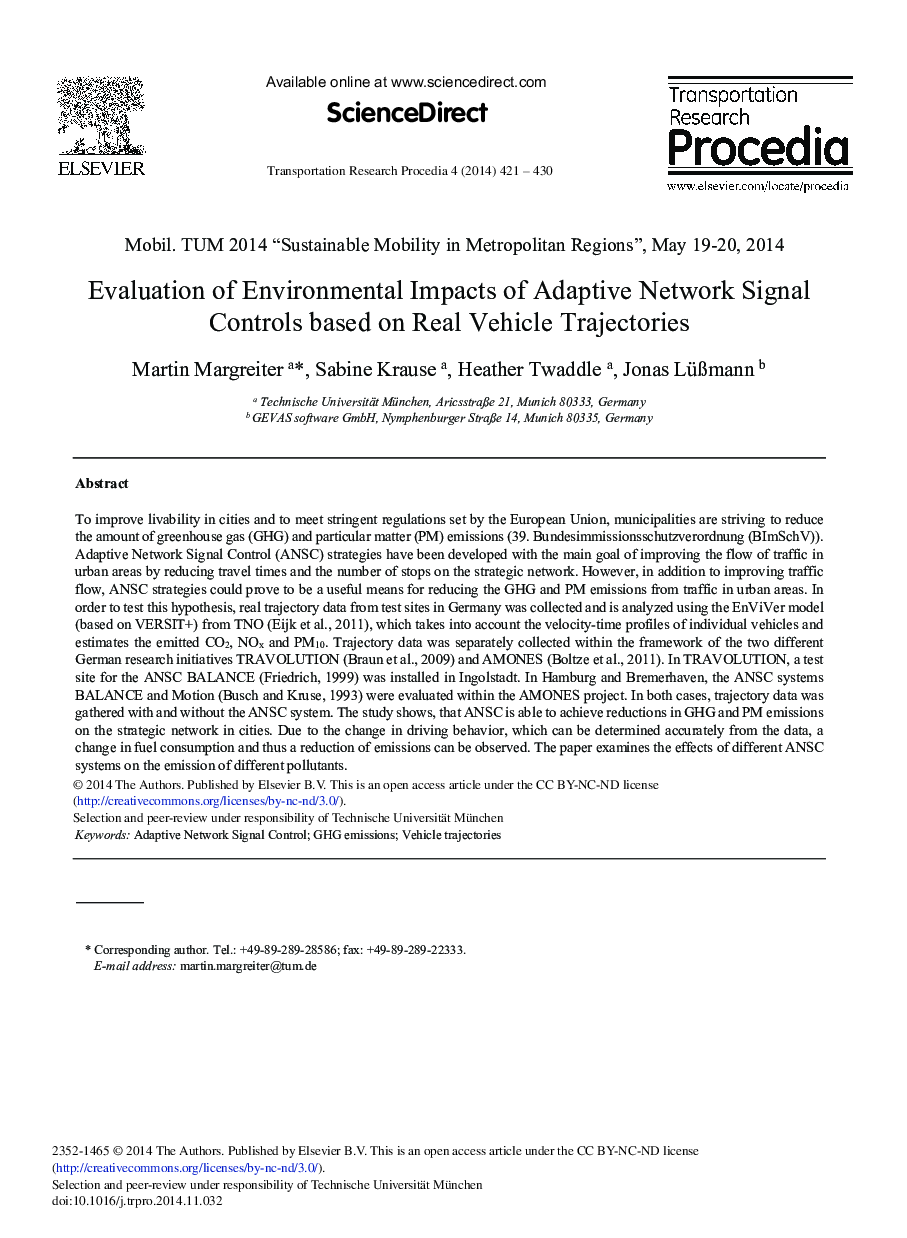| Article ID | Journal | Published Year | Pages | File Type |
|---|---|---|---|---|
| 1106341 | Transportation Research Procedia | 2014 | 10 Pages |
To improve livability in cities and to meet stringent regulations set by the European Union, municipalities are striving to reduce the amount of greenhouse gas (GHG) and particular matter (PM) emissions (39. Bundesimmissionsschutzverordnung (BImSchV)). Adaptive Network Signal Control (ANSC) strategies have been developed with the main goal of improving the flow of traffic in urban areas by reducing travel times and the number of stops on the strategic network. However, in addition to improving traffic flow, ANSC strategies could prove to be a useful means for reducing the GHG and PM emissions from traffic in urban areas. In order to test this hypothesis, real trajectory data from test sites in Germany was collected and is analyzed using the EnViVer model (based on VERSIT+) from TNO (Eijk et al., 2011, ), which takes into account the velocity-time profiles of individual vehicles and estimates the emitted CO2, NOx and PM10. Trajectory data was separately collected within the framework of the two different German research initiatives TRAVOLUTION (Braun et al., 2009, ) and AMONES (Boltze et al., 2011, ). In TRAVOLUTION, a test site for the ANSC BALANCE (Friedrich, 1999, ) was installed in Ingolstadt. In Hamburg and Bremerhaven, the ANSC systems BALANCE and Motion (Busch and Kruse, 1993) were evaluated within the AMONES project. In both cases, trajectory data was gathered with and without the ANSC system. The study shows, that ANSC is able to achieve reductions in GHG and PM emissions on the strategic network in cities. Due to the change in driving behavior, which can be determined accurately from the data, a change in fuel consumption and thus a reduction of emissions can be observed. The paper examines the effects of different ANSC systems on the emission of different pollutants.
